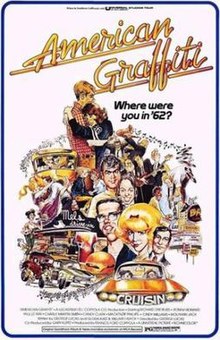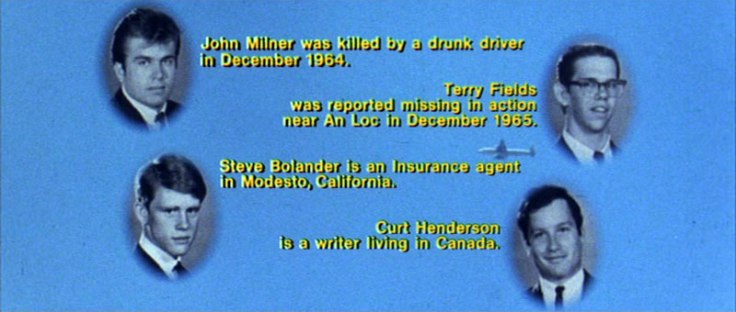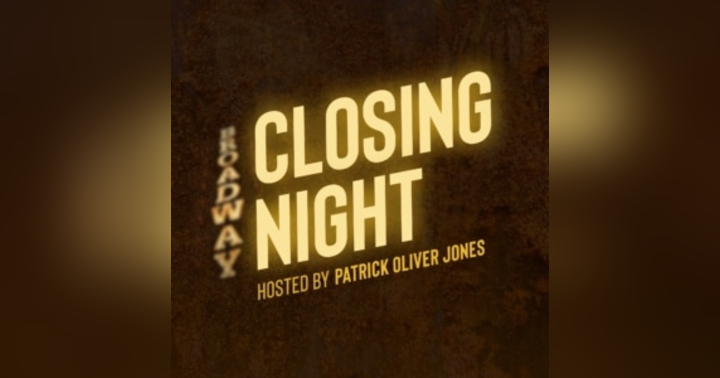The Extreme Sadness of American Graffiti

(NOTE: I wrote this blog post in 2013 after coming from a AG screening)
By Dan Delgado
When you think of the 1970’s classic American Graffiti, what comes to mind? Crazy kids out all night having a good time? Bittersweet nostalgia? The Wolfman Jack cameo? A cinematic precursor to televisions Happy Days? Yeah, that all sounds right. So did I. That is until I caught a recent screening via Cinemark’s Reel Classics series.
It wasn’t until then that I realized just how sad and depressing of a movie American Graffiti really is. Oh sure, there’s some fun to be had here and there with a group of teenagers out all night cruising in 1962 Modesto, CA. When it’s over though, there is no denying that this one depressing experience.

The movie focuses on four young friends the night before two of them are about to depart for out-of-state college. Our first graduate is Steve (Ron Howard). When the movie opens Steve is eager to leave town. Staying in Modesto means living a very boring and dull life to him, so here is his chance to get out and he’s not letting it slip by. One problem for Steve is his longtime girlfriend Laurie (Cindy Williams). He wants to be able to see other girls in college and he breaks it to her which naturally doesn’t go well. Steve spends the rest of the movie in relationship hell trying to patch things up with Laurie. In the end, Steve decides NOT to go. But don't worry he's not letting his dreams go. He tells the guys he’s going to wait a year and then head out so he can be with Laurie. That wouldn’t be too terrible except the movie’s epilogue tells us how Steve is now an insurance agent... in Modesto. The place he was desperate to leave. The place he calls a 'turkey town'. So he never left. He was browbeaten in that last night and gave up on his dreams and sells insurance. Nice.
Next up we have Toad (Charles Martin Smith). Toad is the youngest in the group and a huge nerd. He spends the movie trying to impress a girl he picked up (Candy Clark) and gets into all sorts of nonsense along the way. Toad’s story is definitely the funniest and at the end his girl tells him she’d love to see him again. This is a win, right? Things aren’t looking so bad. Then that epilogue pops up. What happened to loveable 'ol Toad? He was reported missing in action near An Loc in 1965.
The oldest and saddest of the group is hot rodder John Milner (Paul Le Mat). Milner has graduated already by at least a year and is still cruising around Modesto looking for chicks. He’s got a rep for being the best drag racer in town, a title Milner seems to feel a little sheepish about. He’s aware that he’s getting older and going no where. He can sense his own meaningless existence more than he’d like to admit. Milner spends the movie stuck with a teenybopper in his car who won’t leave (Mackenzie Phillips). Some actual fun times abound here. Meanwhile, an outsider with fast ride of his own (Harrison Ford) is looking to challenge him. In the end Milner wins the inevitable showdown but it's a hollow win for Milner. He should be celebrating but the meaningless of being the fastest hot rodder in town has dawned on him. The whole Milner story is soaked in melancholy but that’s not enough. The post epilogue informs us that Milner was killed by a drunk driver in 1964. Yeah, that’s right, he’s dead. Just like Toad probably is. (You stay out of this More American Graffiti!!)
Last we have Curt (Richard Dreyfuss). At the opening of the movie he isn’t sure about leaving for college. Maybe he should play it safe and stay in town for a year or two. Take some time off. Go to a junior college. His night is spent looking for a blonde in a white Thunderbird he sees at the beginning of his picture. He thinks she says “I love you,” to him (though he can’t be sure) and that’s enough to change his entire life. Fair enough, as it would change mine too. Curt’s story is my personal favorite and after a night of hanging out with local street toughs, The Pharaohs, he decides to head off to college. That’s right, Curt gets on the plane at the end takes a chance on life! Finally, a win right? Almost. We find out in the epilogue that Curt is now a writer living in Canada. What? The writer part is great, but what’s up with Canada? Well, let’s do some deductive reasoning here. American Graffiti is released in 1973. The movie takes place in 1962. So why would you go to Canada in between those years? Maybe if you were trying to avoid going to Vietnam? I don’t think it’s crazy to think that Curt is a draft dodger, writing it up in Toronto or Moose Jaw somewhere.
Even the idea of setting the movie in 1962 is sad. It could be the 50’s based on the way the movie looks and feels. I do think there’s a very specific reason for choosing 1962 for the setting. Writer-director George Lucas knows that in 1963 US President John F. Kennedy is killed and Camelot goes with him. After that tragic moment the 60’s start to change and soon hippies and Vietnam will rule the day. Setting it in 1962 not only shows the main characters on their last night of supposed innocence, but also that of the United States as well.

I’m not saying that American Graffiti is bad a movie by any stretch here. That's not the point I'm trying to make. It’s very good, in fact. It’s just despite the reputation that it has as a fun movie, that it is in reality very, very sad.










